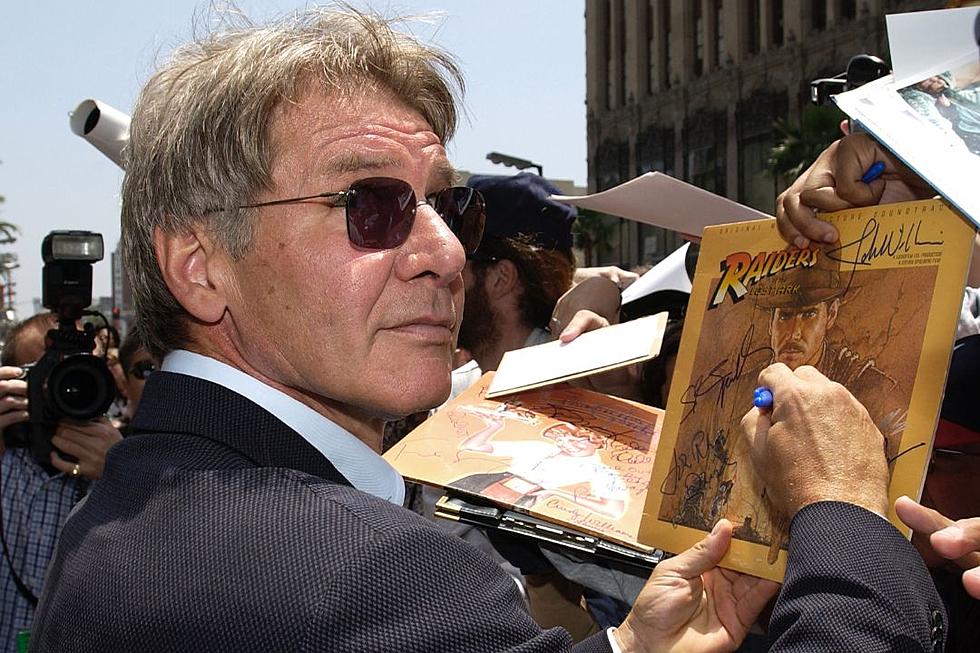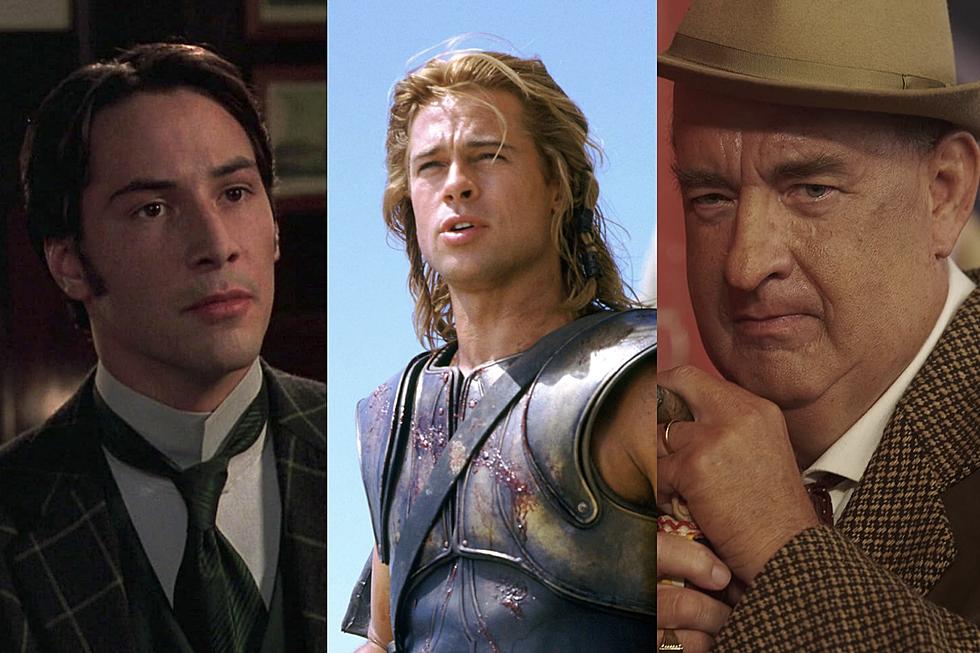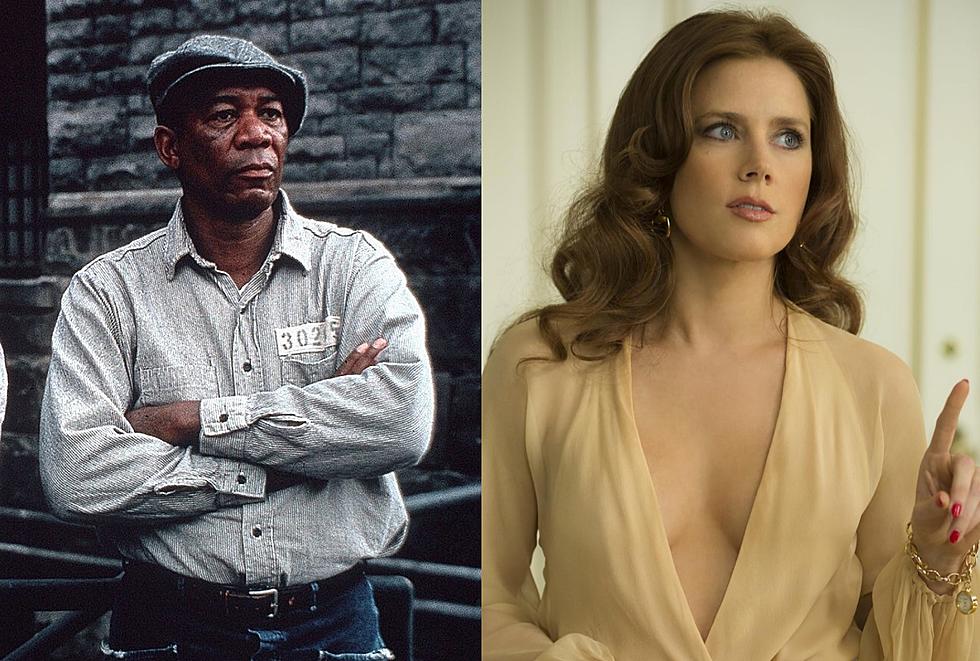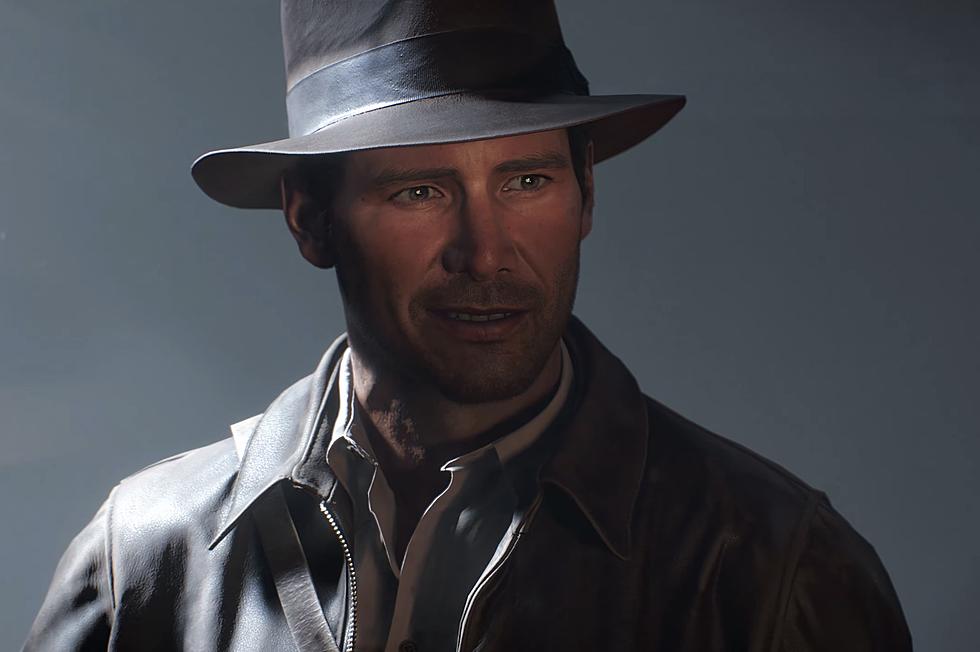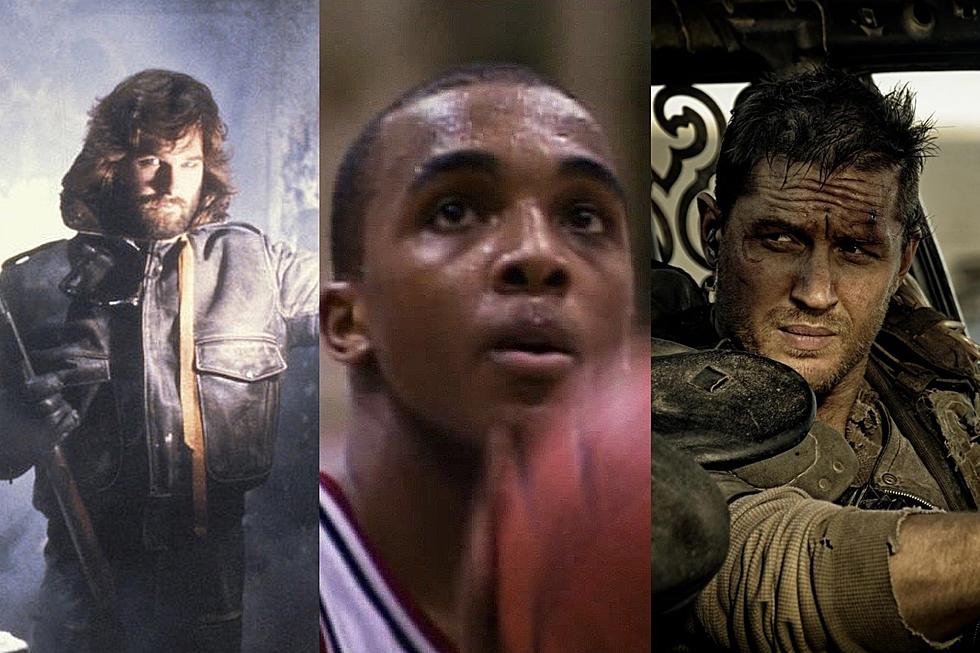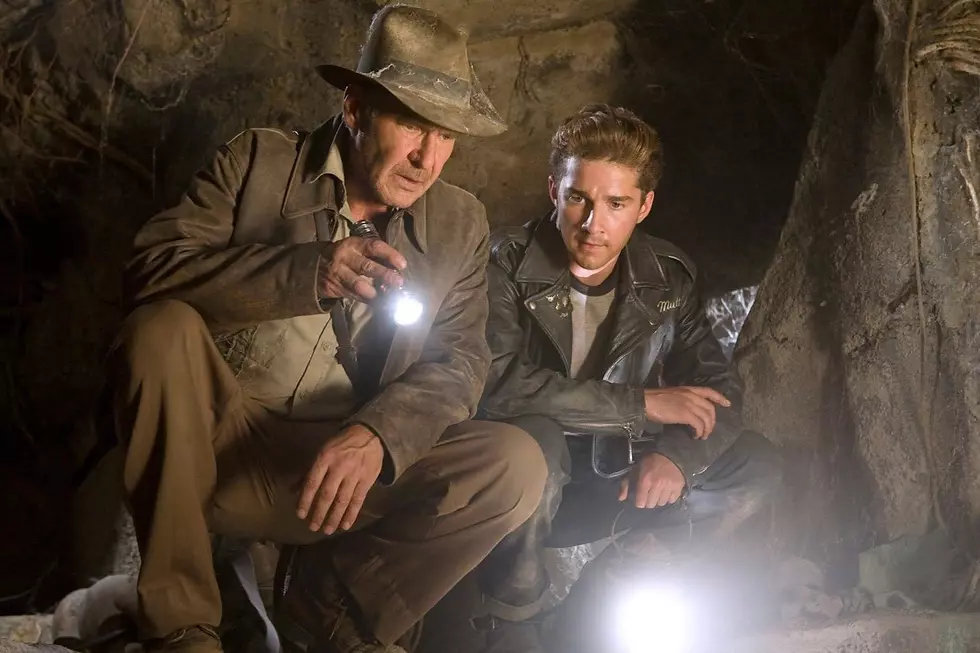
Was the World Wrong About ‘Indiana Jones and the Kingdom of the Crystal Skull’?
The phrase “jump the shark” jumped the shark on May 22, 2008.
That was the day the internet slang for artificially extending the life of a work of pop culture until it no longer resembles the thing that became popular in the first place got its own life extended thanks to Indiana Jones and the Kingdom of the Crystal Skull. The film opens with Indiana Jones (Harrison Ford) reluctantly helping a group of Russians as they scour Area 51 for alien remains. A fight breaks out and Indy winds up in the middle of a nuclear bomb test, which he survives by locking himself in a lead-lined fridge — a plot point that led angry Indiana Jones fans to replace “jump the shark” with a new phrase: “Nuke the fridge.”
That became the fourth Indiana Jones’ legacy: It was the film that nuked the fridge of one of the most beloved franchises in history, first literally and then figuratively. But that was ten years ago, at the crescendo of one of the loudest movie marketing campaigns of the century. It is no exaggeration to say Kingdom of the Crystal Skull, which reunited Ford with series director Steven Spielberg and writer/producer George Lucas, was one of the most anticipated films ever. With expectations higher than the spire of an ancient Mayan temple, the movie was almost guaranteed to disappoint some viewers. A decade later, Crystal Skull is at least due a second look and a fair shake. Was it a legitimate disaster or the victim of its own hype?
Um, can it be both? I want to say both. In some ways, it is just as bad as you remember. In other ways, it is much better.
Let’s get the complaints out of the way first, since they’re fairly boring and they haven’t changed in ten years. The final act of the movie was and remains a mess. Indy’s sidekick through the film is a greaser named Mutt Williams (Shia LaBeouf) who comes to him looking for help rescuing his missing mother and an old friend of Indy’s named Harold Oxley (John Hurt). Spielberg wants it to be a huge shock when Indiana finally find Mutt’s mom and it’s ... Marion Ravenwood (Karen Allen), his old flame from the first Indiana Jones film, Raiders of the Lost Ark. She then reveals that Mutt is his son. But there’s several rather unavoidable clues about both of these “twists” (like Karen Allen’s face on the poster, and Mutt’s name, a winking reference to the fact that Indiana Jones took his own nickname from his childhood dog).
The whole film would be stronger, with more potent emotions, if Indy knew all along he was trying to save Marion, because he’d have a personal investment in his quest, and if he knew Mutt was his kid, because he’d have to process this shocking news in the middle of a madcap dash around the world. (It also would have given Kingdom of the Crystal Skull more opportunities to cleverly invert the father-son dynamic from Indiana Jones and the Last Crusade, where Indy’s dad, played by Sean Connery, tagged along for the adventure.) Instead, Spielberg, Lucas, and writers David Koepp and Jeff Nathanson went for a cheap surprise that they telegraphed anyway.
On top of that, all the best setpieces — the opening with the Russians, a motorcycle chase through the college where Indiana Jones works — are frontloaded, and the stuff in the latter half of the film — a battle with killer ants, and an endless jungle truck chase — pales in comparison, with CGI effects that have dated so poorly the film already looks older and cheaper than the original Raiders. Emotionally and visually, Kingdom of the Crystal Skull peaks early, stumbles, then never regains its footing.
So that’s the bad news. The good news is that there is more to Kingdom of the Crystal Skull than its computer-generated surface. It’s not one of the most entertaining Indiana Jones movies, but it is one of the most interesting, thanks to its use of Indy’s career as a meta-commentary on the franchise and on nostalgia’s insidious influence on Hollywood in general.
Legacy is important to every Indiana Jones movie; the title character is an archaeologist by trade. He splits his time between college lectures about the wonders of antiquity and globetrotting adventures where he tries to keep those wonders out of the hands of foreign menaces and greedy capitalists. But the previous Indiana Jones movies treated archaeology as Indy’s excuse to travel rather than his true vocation. After a scene or two at fictional Marshall College, Indy was off on the trail of some artifact and it was pretty much non-stop excitement from there. Kingdom of the Crystal Skull is slower and more deliberate, with more puzzle solving and more historical tidbits sprinkled into the dialogue.
Where previous Indiana Joneses mostly saw Indy on the trail for some priceless object he would only acquire in the final act, Indy and Mutt find Kingdom of the Crystal Skull’s MacGuffin — an alien skull-shaped piece of quartz with otherworldly magnetic powers — after only a handful of scenes. That, in turn, leads them to the ruins of a hidden lost city known as Akator, where they discover a temple that houses the bodies of twelve aliens, along with invaluable treasures collected from ancient civilizations from all over the globe. When Indy finally uncovers the aliens and their bounty he notes “They were archaeologists,” connecting his quests to theirs.
Kingdom of the Crystal Skull is the movie version of the aliens’ stockpile of relics: A collection of trinkets, objects, images, and tropes assembled from around the world of movie history. Mutt Williams dresses like Marlon Brando in The Wild One and swings on vines like Tarzan. There are sword fights straight out of an old Errol Flynn movie, killer monkeys like Aguirre, the Wrath of God, and the aliens themselves, taken from countless science-fiction films from the 1950s, when Kingdom of the Crystal Skull is set.
The first Indiana Jones trilogy is powered by religion; all of the antiques Indy chases after have religious value to their followers (and which often end up displaying genuine supernatural power). With its aliens, spaceships, and telepathic powers, Kingdom of the Crystal Skull is about science-fiction — or perhaps about science fiction as religion, since Cate Blanchett’s “psychic” (ugh) Soviet agent Col. Irina Spalko is fixated on these aliens and the hidden knowledge they possess.
All four Indiana Jones movies end basically the same way: The bad guys get what they want but their greed proves to be their undoing. Kingdom of the Crystal Skull fulfills the broad strokes of that plot point, but with some key differences. When Spalko comes face to face with the aliens, she demands they turn over their secrets. “I vant to know!” she screams, until the aliens oblige and fill her brain with their accumulated wisdom. And then this happens:
The temple collapses and the UFO hidden inside zooms off, headed for parts unknown. A satisfied Indiana Jones notes that the aliens’ treasure “wasn't gold. It was knowledge. Knowledge was their treasure.” But we just watched knowledge turn Cate Blanchett into the stuff that comes out the end of a vape pen. That seems like a pretty crappy treasure?
Like Ready Player One a decade later, Kingdom of the Crystal Skull finds Steven Spielberg exploring that tension between the allure of the past and the dangers of an obsession with it. Indiana Jones loves his ancient artifacts but he also wants to protect them. “They belong in a museum!” is his perpetual refrain. The villains want to exploit the past, to use it for their own evil purposes — like, oh I don’t know, making a fourth Indiana Jones film when the actors are all older and the story just isn’t there but the audience demands it. (In a way, the viewers are the ones who get roasted by the MacGuffin at the end of Kingdom of a Crystal Skull.)
Die-hard Indiana Jones fans tend to dislike Kingdom of the Crystal Skull but the movie was clearly made with them in mind. There are tons of references to Indy’s previous films, like the cameo the Ark of the Covenant makes in Area 51, old photographs of Sean Connery’s Henry Jones Sr., the return of Marion Ravenwood, and a statue of Marcus Brody, Indy’s old friend and the dean of Marshall College. When Indiana Jones tells Mutt Williams he once met Pancho Villa, it’s a cute line — and a reference to the TV show The Young Indiana Jones Chronicles, where that did indeed happen.
Young Indiana Jones was the key Indy project made by George Lucas without the direct involvement of Steven Spielberg, and there’s a lot of Lucas in Crystal Skull as well. Since 1973’s American Graffiti, a film set in 1962 about characters already pining for an earlier era that is ending, Lucas has specialized in films that are not only nostalgic, but nostalgic movies about nostalgia. Indiana Jones, with his fixation on objects of history and legend, is kind of a professional nostalgist; in the way Kingdom of the Crystal Skull calls back to the earlier Indiana Jones films, it’s nostalgic for nostalgia as well.
That “knowledge was their treasure” scene also has a lovely visual rhyme with the beginning of the film, that most people miss. Indy staring at the enormous UFO as it disappears...
... is an almost exact mirror image of the moment from the first sequence where Indy stares at the mushroom cloud from the hydrogen bomb he narrowly escaped...
Watched in 2018, all of Crystal Skull’s self-referential jokes and winking homages seems to anticipate YouTube movie culture, with its fixation on collecting hidden Easter eggs and fan theories, and, in placing all of those jokes and homages in a movie about the potentially destructive nature of knowledge, to preemptively caution against it.
The phrase “jump the shark” comes from Happy Days; in the show’s Season 5 premiere, Fonzie literally jumped over a shark on a pair of water skis. But Fonzie would have almost certainly not jumped over a shark specifically if Steven Spielberg’s Jaws hadn’t made sharks such a massive part of 1970s popular culture. (You can even hear a few homages to John Williams’ famous Jaws score in the soundtrack of the jumping the shark scene:)
Happy Days is another show about nostalgia, albeit of a much tamer and less violent sort. Kingdom of the Crystal Skull didn’t jump the shark when it nuked the fridge. But it did warn viewers that becoming too consumed with the past can consume you in the process.
Gallery - The Dumbest Sequel Subtitles Ever:
More From ScreenCrush
![Harrison Ford’s Spectacular $20 Million California Estate For Sale — See Inside! [Pictures]](http://townsquare.media/site/204/files/2024/04/attachment-harrison-ford-house-for-sale-pictures.jpg?w=980&q=75)
